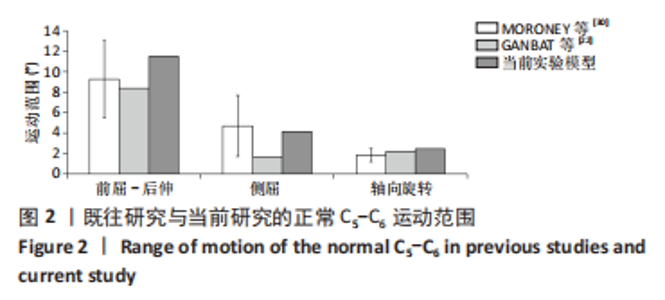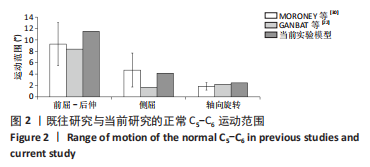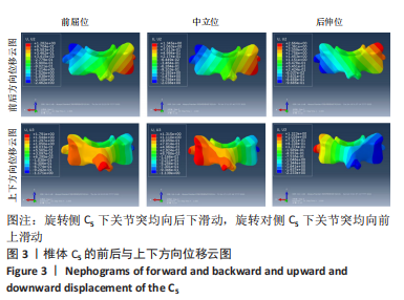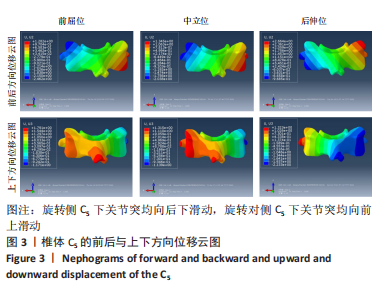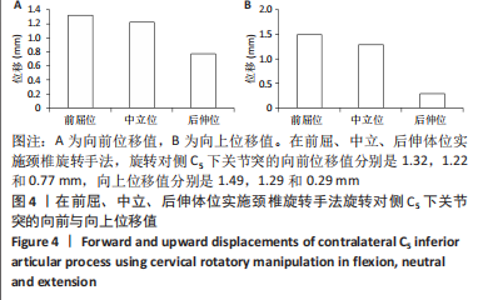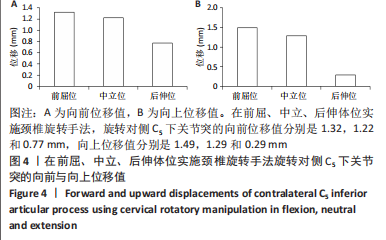[1] HIRAI S, KATO S, NAKAJIMA K, et al. Anatomical study of cervical intervertebral foramen in patients with cervical spondylotic radiculopathy. J Orthop Sci. 2021;26(1):86-91.
[2] WOODS BI, HILIBRAND AS. Cervical radiculopathy: epidemiology, etiology, diagnosis, and treatment. J Spinal Disord Tech. 2015;28(5): E251-259.
[3] COREY DL, COMEAU D. Cervical radiculopathy. Med Clin North Am. 2014;98(4):791-799, xii.
[4] LIN T, WANG Z, CHEN G, et al. Predictive Effect of Cervical Sagittal Parameters on Conservative Treatment of Single-Segment Cervical Spondylotic Radiculopathy. World Neurosurg. 2020;134:e1028-e1036.
[5] RADHAKRISHNAN K, LITCHY WJ, O’FALLON WM, et al. Epidemiology of cervical radiculopathy. A population-based study from Rochester, Minnesota, 1976 through 199. Brain. 1994;117(Pt 2):325-335.
[6] BORRELLA-ANDRES S, MARQUES-GARCIA I, LUCHA-LOPEZ MO,
et al. Manual Therapy as a Management of Cervical Radiculopathy: A Systematic Review. Biomed Res Int. 2021;2021:9936981.
[7] CHILDRESS MA, BECKER BA. Nonoperative Management of Cervical Radiculopathy. Am Fam Physician. 2016;93(9):746-754.
[8] THOOMES E, THOOMES-DE GRAAF M, CLELAND JA, et al. Timing of Evidence-Based Nonsurgical Interventions as Part of Multimodal Treatment Guidelines for the Management of Cervical Radiculopathy: A Delphi Study. Phys Ther. 2022;102(5):pzab312. doi: 10.1093/ptj/pzab312.
[9] 詹红生.颈椎相关疾病手法诊疗及研究中的若干问题探讨[J].中医正骨,2018,30(3):1-3+6.
[10] 詹红生,石印玉,黄仕荣,等.颈椎病发病机制的再认识——兼谈中医学“骨错缝、筋出槽”理论的临床价值[J].中国中医骨伤科杂志,2006(S2):201-202.
[11] 黄学成,叶林强,伍子贤,等.基于“筋出槽、骨错缝”理论探讨神经根型颈椎病的CT特征[J].中华中医药杂志,2019,34(8):3483-3487.
[12] 张明才,程英武,詹红生,等.神经根型颈椎病椎间孔狭窄因素的影像学分析[J].北京中医药大学学报,2009,32(3):199-203.
[13] 张明才,石印玉,陈东煜,等.神经根型颈椎病患者颈神经根压迫性刺激因素的研究[J].上海中医药杂志,2021,55(1):52-56.
[14] 张明才,石印玉,陈东煜,等.矫正关节突关节“骨错缝”手法治疗神经根型颈椎病的有效性研究[J]. 上海中医药杂志,2011,45(12):42-45.
[15] LU J, EBRAHEIM NA, HUNTOON M, et al. Cervical intervertebral disc space narrowing and size of intervertebral foramina. Clin Orthop Relat Res. 2000;(370):259-264.
[16] YOO JU, ZOU D, EDWARDS WT, et al. Effect of cervical spine motion on the neuroforaminal dimensions of human cervical spine. Spine (Phila Pa 1976). 1992;17(10):1131-1136.
[17] EVANS DW. Mechanisms and effects of spinal high-velocity, low-amplitude thrust manipulation: previous theories. J Manipulative Physiol Ther. 2002;25(4):251-262.
[18] 王傅,陈丽珍,李义凯,等.两种颈椎旋转手法所致咔哒声响的比较[J].中国康复医学杂志,2011,26(3):245-250.
[19] XUE F, CHEN Z, YANG H, et al. Effects of cervical rotatory manipulation on the cervical spinal cord: a finite element study. J Orthop Surg Res. 2021;16(1):737.
[20] MO ZJ, ZHAO YB, WANG LZ, et al. Biomechanical effects of cervical arthroplasty with U-shaped disc implant on segmental range of motion and loading of surrounding soft tissue. Eur Spine J. 2014;23(3):613-621.
[21] LEE SH, IM YJ, KIM KT, et al. Comparison of cervical spine biomechanics after fixed- and mobile-core artificial disc replacement: a finite element analysis. Spine (Phila Pa 1976). 2011;36(9):700-708.
[22] GANBAT D, KIM YH, KIM K, et al. Effect of mechanical loading on heterotopic ossification in cervical total disc replacement: a three-dimensional finite element analysis. Biomech Model Mechanobiol. 2016;15(5):1191-1199.
[23] CAI XY, YUCHI CX, DU CF, et al. The effect of follower load on the range of motion, facet joint force, and intradiscal pressure of the cervical spine: a finite element study. Med Biol Eng Comput. 2020;58(8):1695-1705.
[24] SANG D, DU CF, WU B, et al. The effect of cervical intervertebral disc degeneration on the motion path of instantaneous center of rotation at degenerated and adjacent segments: A finite element analysis. Comput Biol Med. 2021;134:104426.
[25] CAI XY, SANG D, YUCHI CX, et al. Using finite element analysis to determine effects of the motion loading method on facet joint forces after cervical disc degeneration. Comput Biol Med. 2020;116:103519.
[26] HERRON MR, PARK J, DAILEY AT, et al. Febio finite element models of the human cervical spine. J Biomech. 2020;113:110077.
[27] OTTARDI C, GALBUSERA F, LUCA A, et al. Finite element analysis of the lumbar destabilization following pedicle subtraction osteotomy. Med Eng Phys. 2016;38(5):506-509.
[28] ZHAO L, CHEN J, LIU J, et al. Biomechanical analysis on of anterior transpedicular screw-fixation after two-level cervical corpectomy using finite element method. Clin Biomech (Bristol, Avon). 2018;60:76-82.
[29] WANG Z, ZHAO H, LIU JM, et al. Resection or degeneration of uncovertebral joints altered the segmental kinematics and load-sharing pattern of subaxial cervical spine: A biomechanical investigation using a C2-T1 finite element model. J Biomech. 2016;49(13):2854-2862.
[30] MORONEY SP, SCHULTZ AB, MILLER JA, et al. Load-displacement properties of lower cervical spine motion segments. J Biomech. 1988; 21(9):769-779.
[31] COFANO F, SCIARRONE GJ, PECORARO MF, et al. Cervical Interfacet Spacers to Promote Indirect Decompression and Enhance Fusion in Degenerative Spine: A Review. World Neurosurg. 2019;126:447-452.
[32] GOEL A, DHARURKAR P, SHAH A, et al. Facetal Fixation Arthrodesis as Treatment of Cervical Radiculopathy. World Neurosurg. 2019;121: e875-e881.
[33] GOEL A, SHAH A, PATNI N, et al. Immediate Postoperative Reversal of Disc Herniation Following Facetal Distraction-Fixation Surgery: Report of 4 Cases. World Neurosurg. 2016;94:339-344.
[34] RAMOS MRD, MENDOZA CJP, YUMOL JV, et al. Multilevel, Percutaneous Posterior Cervical Interfacet Distraction and Fusion for Cervical Spondylotic Radiculopathy: Clinical and Radiographic Outcomes. Spine (Phila Pa 1976). 2021;46(21):E1146-E1154.
[35] SIEMIONOW K, JANUSZ P, GLOWKA P. Cervical cages placed bilaterally in the facet joints from a posterior approach significantly increase foraminal area. Eur Spine J. 2016;25(7):2279-2285.
[36] RONG X, WANG B, DING C, et al. The biomechanical impact of facet tropism on the intervertebral disc and facet joints in the cervical spine. Spine J. 2017;17(12):1926-1931.
[37] TERAGUCHI M, YOSHIMURA N, HASHIZUME H, et al. Prevalence and distribution of intervertebral disc degeneration over the entire spine in a population-based cohort: the Wakayama Spine Study. Osteoarthritis Cartilage. 2014;22(1):104-110.
[38] WANG HH, WANG K, DENG Z, et al. Effects of facet joint degeneration on stress alterations in cervical spine C5-C6: A finite element analysis. Math Biosci Eng. 2019;16(6):7447-7457.
|
